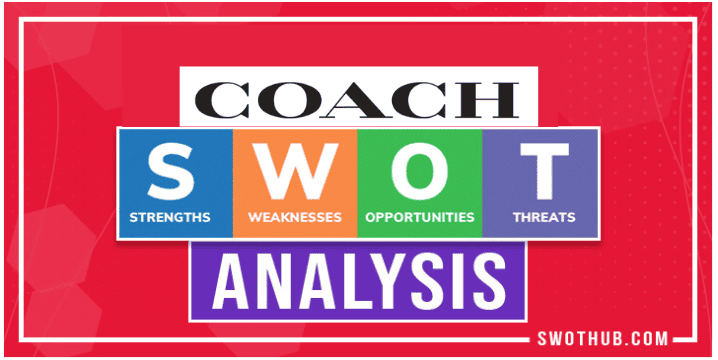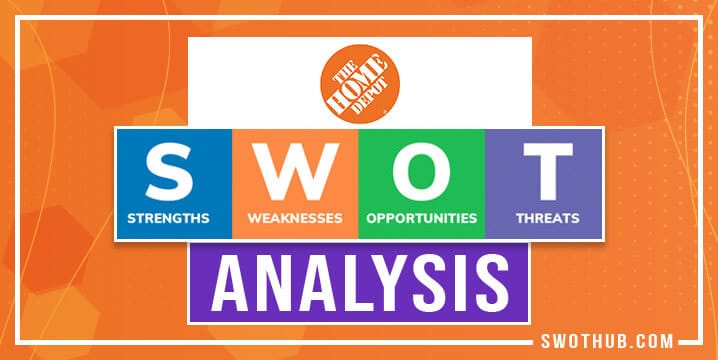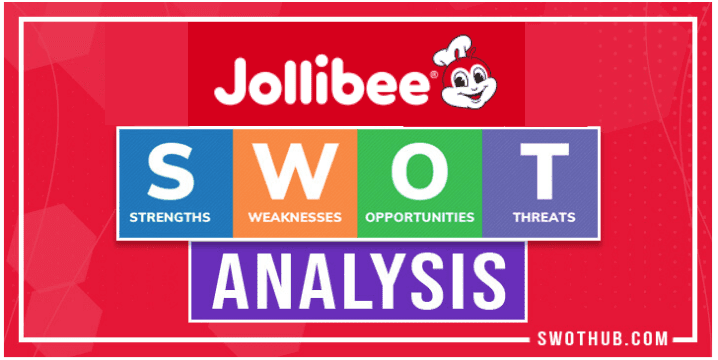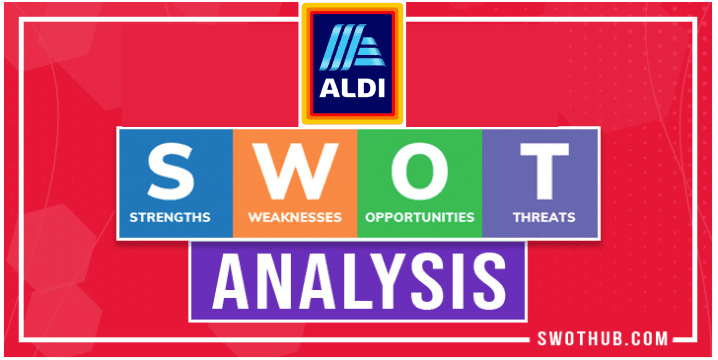The world of leather luxury goods has been competitive for generations. In a Coach SWOT analysis, we look at how Coach, or Coach New York, has transformed the fashion industry while remaining a competitive brand to compete against. In 2017, they changed their name from Coach, Inc. to Tapestry, Inc. Known for its sustainably responsible leather purses, wallets, clothing, and more, let’s look at Coach’s strengths, weaknesses, opportunities, and threats.
What is the History of Coach?
According to a Coach SWOT analysis, renowned leather goods producer Coach was established in New York City in 1941. The business, originally known as “Gail Leather Products,” specialized in producing women’s purses with exceptional leather craftsmanship. Miles Cahn and his wife Lillian joined the business in 1961 and made a substantial contribution to its transformation. They debuted “The Duffle Sac,” a striking design that became a trademark Coach item.
Coach has developed a solid reputation for its dedication to quality and craftsmanship over the years. The brand’s strength is its ability to deliver leather items that are consistently of high caliber and convey a classic elegance. Coach emphasizes the use of premium materials and expert craftsmanship to make sure that each product represents its commitment to longevity and attention to detail. They have been able to produce goods that survive the test of time and maintain their appeal because of this emphasis.
| Company | Coach, Tapestry |
| Industry | Retail Apparel, Fashion |
| Founders | Miles and Lillian Cahn |
| Year founded | 1941 |
| CEO | Todd Kahn |
| Headquarters | New York City, New York |
| Number of employees | 30,000+ (2022) |
| Revenue (FY 2022) | US $6.7 Billion (2022) |
In a SWOT analysis of Coach, it has also excelled at brand positioning and marketing tactics, which have helped the company distinguish itself from rivals. Their distinctive “C”-patterned cloth, which was first used in the 1990s, quickly became a recognized brand mark. Coach has been successful at making customers feel exclusive and desirable by utilizing their distinctive emblem and their reputation for quality.
Additionally, Coach has developed a significant retail presence both at home and abroad. They have access to a significant client base thanks to their extensive network of independent shops, outlets, and shop-in-shops. Coach has been able to grow their market share and create a devoted following by carefully selecting locations to open shop in and by upholding a consistent brand image and customer experience.
Table of Contents
Is Coach made with real leather?
In a SWOT analysis, many people wonder if Coach is made with real leather. Coach has mentioned that they give preference to collaborating with tanneries that have received a gold or silver rating from the Leather Working Group, indicating that they have met the most stringent environmental standards in the sector. By 2022, 99% of our footwear products and 95% of Coach’s leather goods will use leather from these tanneries. By 2025, they intend to use at least 90% leather from gold- and silver-rated tanneries.
SWOT Analysis:
A SWOT analysis is a framework used to assess a company’s competitive situation and to create strategic planning. By taking Coach’s strengths, weaknesses, threats, and opportunities into account, we may better gain in-depth knowledge about Coach’s company. In this article, we’ll be taking a look at Coach’s SWOT framework to better understand its competitive position and potential for future growth. See how Coach’s competitors fare against them and learn about Coach’s Strengths, weaknesses, opportunities, and Coach’s threats.
Coach Strengths in SWOT Analysis:
The areas where a company excels above average or in a manner that distinguishes it from its rivals are its strengths. Coach strengths are outlined in this SWOT analysis. In a SWOT analysis of Coach, some of its strengths compared to competitors include:
In a SWOT analysis, Coach is rooted in its dedication to expert leather craftsmanship and meticulousness. Their commitment to quality, their ability to mix classic and contemporary designs, their successful branding and marketing, and their well-established retail presence set them apart from the competition. As a result, Coach has gained prominence in the leather goods sector and is well-liked by clients looking for timeless design and superior craftsmanship.
Recycling initiatives: Coach created Coachtopia with the help of their Beta Community, a sizable and motivating network of Generation Z people from all over the world who are contributing their thoughts and ideas to Coachtopia’s products, messages, and concepts as we create them. They are establishing Coachtopia as a platform for change by working with activists, designers, makers, and creatives from the local community on our content, products, and initiatives.
Heritage and Reputation: In SWOT analysis, as a high-end fashion label renowned for its fine craftsmanship and quality, Coach has a lengthy history and a solid reputation. Since its establishment in 1941, the business has become renowned for its dedication to creating high-quality leather products.
Superior Craftsmanship: Coach items are renowned for their high level of craftsmanship. Talented artisans who work for the company meticulously plan and create each piece, ensuring attention to detail and high-quality finishing. Leather goods that are long-lasting and sturdy are produced using high-quality materials and skilled procedures.
Accessibility: Coach is regarded as a premium brand, but in comparison to certain other high-end fashion firms, it offers a more affordable price range. This accessibility enables a larger customer base to take advantage of the grandeur and high quality associated with Coach items.
Brand Influence: Coach has established a strong global presence and brand recognition. It has a solid international consumer base and a solid reputation in the fashion sector. This recognition further enhances the brand’s reputation and perceived value.
Customer service is a priority for Coach, which gives its consumers a satisfying buying experience. Their competent staff and prompt assistance have an impact on customer loyalty and satisfaction.
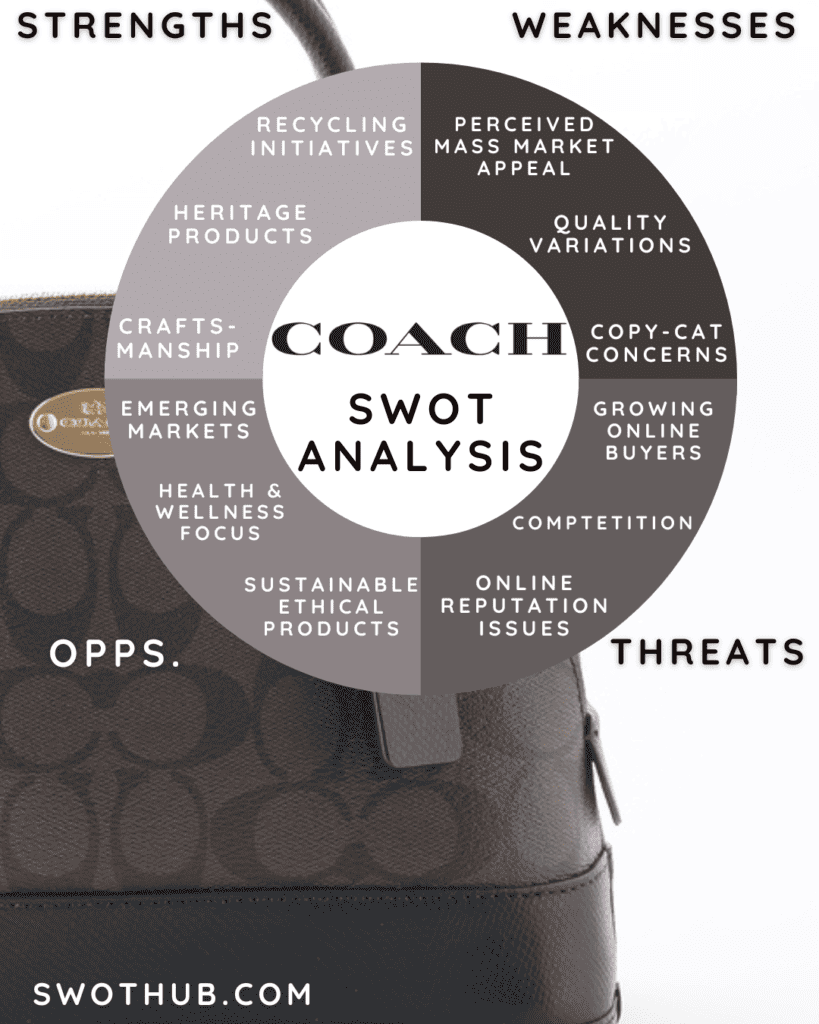
Coach SWOT Analysis Weaknesses:
The weaknesses of a company are those that limit its potential, make it less competitive, and prevent it from achieving its goals. In this section of the Coach SWOT analysis, we’ll look at Coach’s weaknesses. In a Coach SWOT analysis, some of their weaknesses compared to competitors include:
Competition is fierce, according to a SWOT analysis of Coach, with numerous well-known brands vying for market share in the luxury apparel sector. Other high-end leather goods manufacturers like Louis Vuitton, Gucci, Prada, and Michael Kors compete fiercely with Coach. Coach is under pressure from this competition to continuously innovate and set itself apart in the market.
Perception of Mass Market Appeal: Despite marketing itself as a luxury brand, Coach occasionally had trouble upholding an upscale reputation. As a result of the brand’s efforts to expand its consumer base, some people believe Coach products are more widely available or mainstream than those from other high-end companies. This idea might have an impact on the brand’s appeal to customers seeking exclusivity.
Counterfeiting Concerns: Coach is a well-known fashion brand and identifiable brand, making it a target for counterfeiters. The availability of counterfeit Coach products on the market has an impact on consumer confidence in the company. Even though Coach takes action to stop counterfeiting, the problem persists.
Potential Quality Variations: Coach’s manufacturing and supply chain are expanding; therefore, there is a chance that the quality of its entire product line may vary. Although the company strives to uphold its reputation for exceptional workmanship, quality control problems occasionally occur and can result in inconsistent product experiences.
Coach Opportunities:
A world of opportunities exists in which Coach exists. The opportunities that Coach has in comparison to its rivals will be looked at in the next section of this SWOT analysis for Coach:
Emerging Markets: Coach has the chance to increase its market share in developing nations, particularly in those where the demand for luxury goods is rising quickly, including China, India, and Southeast Asia. In a Coach SWOT analysis, it may reach a new consumer base and expand its market share by focusing on these markets with specialized marketing techniques and regionalized product offerings.
Collaborations and Partnerships: Coach may look at forming limited-edition collections or co-branded products with other fashion houses, designers, or celebrities. These partnerships can create excitement, draw in new clients, and offer distinctive and exclusive goods that set Coach apart from the competition.
Sustainable and Ethical Practices: In a Coach SWOT analysis, it has the chance to strengthen its adherence to these values as consumers place a higher priority on sustainability and ethical behavior. Coach can attract environmentally conscious customers and uphold its brand values by using sustainable materials, eco-friendly manufacturing techniques, and fair labor standards.
Personalization and Customization: Coach may have a strong business case to make by providing customized and adaptable alternatives. Coach may offer a distinctive and customized experience, enhancing consumer loyalty and engagement, by enabling customers to add personalized embellishments, select color schemes, or monogram their products.
Social Media and Influencer Marketing: Coaches may boost brand recognition, interact with younger demographics, and produce aspirational content by utilizing social media channels and working with influencers. Coach can reach new audiences and create buzz about its products by using social media platforms carefully.
Coach Threats:
Threats pose a risk to every company’s stability and profitability.
In a SWOT analysis of Coach, some of its largest threats compared to competitors include:
The competition is fierce, with numerous well-known brands vying for market share in the luxury apparel sector. Other high-end leather goods manufacturers like Louis Vuitton, Gucci, Prada, and Michael Kors compete fiercely with Coach. These rivals pose a challenge to Coach’s market position because of their strong brand awareness, devoted consumer bases, and substantial resources.
Economic factors: Economic downturns or volatility can have an impact on consumer spending on luxury goods. Consumers might pick necessities over luxury things in times of economic instability, which would lower demand for Coach goods. Economic factors like inflation, shifting currency exchange rates, or changes in consumer confidence can have an impact on the availability and appeal of luxury goods.
Product Counterfeits: In SWOT analysis, it is vulnerable to product counterfeiting, which poses a serious risk to the brand’s standing and financial health. Products that are counterfeit damage a brand’s reputation while also possibly putting it in legal hot water. Through anti-counterfeiting procedures, education, and cooperation with law enforcement organizations, Coach must vigorously battle counterfeiting.
Consumer Preferences and Trends are Always Changing: Consumer preferences and fashion trends are always changing. Coach must continue to be aware of shifting consumer preferences and adjust its product lineup accordingly. Consumer interest may decline, and market share may be lost to more trend-ahead rivals if a company fails to satisfy changing customer expectations or lags behind in innovation or aesthetics.
Online reputation and social media: In a Coach SWOT analysis, social media platforms give users a strong platform to share their thoughts and experiences. Online rumors or viral events involving Coach products have the potential to damage the company’s reputation. To prevent any possible harm from social media, Coach needs to aggressively manage its online presence, respond to customer concerns, and maintain a strong brand image.
Who are Coach’s Biggest Competitors?
In a SWOT analysis of Coach, its competitors would fall under the “threats” category. Here are some of Coach main competitors in the Coach industry. Many people ask:
Coach has several competitors in the luxury brand sector, with numerous well-known brands vying for market share. Other high-end leather goods manufacturers who are Coach’s biggest competitors include:
- Louis Vuitton
- Gucci
- Prada
- Michael Kors
These rivals pose a challenge to Coach’s market position because of their strong brand awareness, devoted consumer bases, and substantial resources.
Coach Conclusion and Recommendations:
Coach needs to focus on several key strategies to remain competitive in the fashion and luxury goods industry.
To stay competitive in the future, Coach can consider implementing the following recommendations:
- Innovation and Differentiation: Coach needs to keep coming up with new designs and materials to set itself apart from rivals. Putting money into research and development can result in the development of original, cutting-edge designs that incorporate fresh materials and cutting-edge methods. This will support Coach in keeping up its appeal to customers who value fashion.
- Embrace Sustainability: As consumers place a greater emphasis on sustainability, Coach can further incorporate sustainable practices into its daily operations. This entails developing sustainable production techniques, utilizing eco-friendly products, and supporting ethical employment practices.
- Innovate the online shopping experience: Coach should give special attention to expanding its e-commerce skills and online presence. The entire customer journey may be improved by making investments in user-friendly websites and mobile apps, seamless online transactions, and tailored customer involvement.
- Accept personalization: Providing tailored services and experiences can increase consumer loyalty and a sense of exclusivity. Coach can look at opportunities for customization, allowing clients to select colors, materials, or add unique elements to their purchases.
- Collaborations and Limited Editions: Working with well-known designers, performers, or celebrities on limited-edition projects can spark interest and draw in new clients. These collaborations have the potential to generate unique ideas and products that appeal to target markets.
By putting these suggestions into practice, Coach can establish itself as a leading luxury brand that values innovation, sustainability, and customer-centric approaches, ensuring its ability to compete in the fast-moving and always-changing fashion sector.

